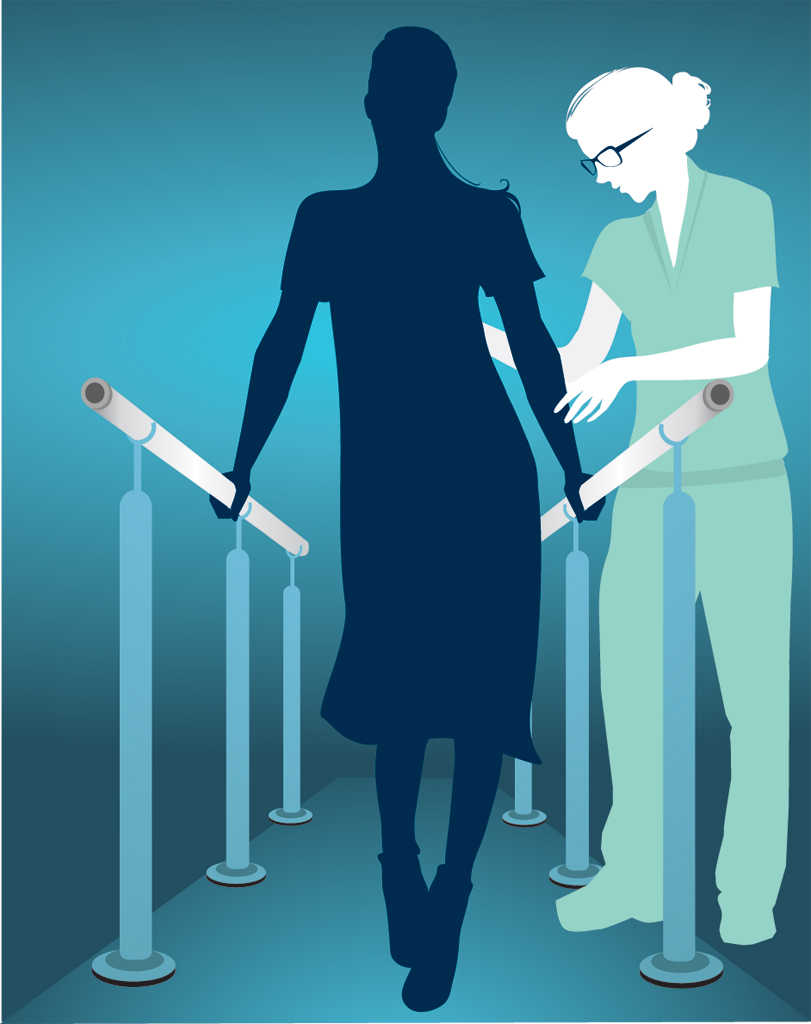By Ellen Land, APN
That pain and stiffness you feel in your joints when you first get out of bed in the morning or try to stand after sitting for a period of time is most likely a sign of arthritis.
So is the stiffness in your hands that makes it hard to hold your cup of coffee or type out a message on your phone or keyboard.
Most people will develop some degree of osteoarthritis as they age.
In fact, osteoarthritis affects more than 32.5 million people in the United States, according to the Centers for Disease Control and Prevention (CDC).
While some people may not even realize they have osteoarthritis, experiencing only occasional aches and stiffness, others will experience more debilitating pain that regularly impacts their quality of life.
If that occurs, it is time to talk with your doctor. Although there is no cure for osteoarthritis, a variety of treatment options can help relieve the pain and give you your life back.
Wear and Tear
Osteoarthritis — a degenerative joint disease — is the result of wear and tear on your joints as you age.
The cartilage that cushions and protects the ends of your bones begins to break down. Over time, this breakdown may lead to bone rubbing against bone.
Additionally, osteoarthritis causes changes in the bone and the connective tissues that hold the joint together and attach the muscles to the bone. It also causes inflammation.
Though osteoarthritis can affect any joint in your body, it most frequently occurs in the hands, hips, and knees, according to the CDC.
A Range of Risk Factors
Osteoarthritis typically affects people who are middle-aged or older, and the risk increases with age. Other risk factors, according to the CDC, include:
• Joint injury or overuse. Knee bending and repetitive stress can damage the joint and increases the risk of osteoarthritis in that joint.
• Gender. Women are more likely to develop osteoarthritis than men, especially after age 50.
• Obesity. Extra weight puts more stress on joints, especially weight-bearing joints like the hips and knees. Additionally, obesity may have metabolic effects that increase the risk of osteoarthritis.
• Genetics. People who have family members with osteoarthritis are more likely to develop osteoarthritis themselves.
Watch for These Signs
• Pain. It may be worse in the morning and feel better with activity. Vigorous activity, however, may cause pain to flare up.
• Stiffness. Bending, straightening, and rotating the joint may become more difficult.
• Locking. An arthritic joint may feel as if it is locking or sticking.
• Grinding. You might feel a grinding sensation and may hear creaking, clicking, or snapping noises.
• Swelling. In addition to the joint appearing swollen, a bump may develop.
• Redness. This may be caused by soft tissue inflammation around the joint.
A Range of Treatments Can Help
If you experience pain, stiffness, and swelling, treatment may begin with over-the-counter pain relievers, topical creams to help reduce pain and swelling, and heat or ice on the area.
Massage, yoga and other activities to loosen and strengthen your muscles can also help. Some people are concerned that physical activity will aggravate their osteoarthritis, but joint-friendly physical activity can actually reduce pain and improve function.
If those approaches do not provide relief and you are having difficulty carrying out your daily activities or enjoying the things you love, seek medical attention.
Inflammation can often be reduced with oral steroids or cortisone injections at the site of the affected joint.
If those measures do not help, some arthritic joints can be repaired arthroscopically, smoothing and realigning the joint surface to reduce pain and improve mobility. In other cases, surgery to replace the damaged joint may be recommended.
The Jim Craigie Center for Joint Replacement at Penn Medicine Princeton Medical Center offers a comprehensive approach to joint replacement surgery with the goal of helping you reclaim your life as soon as possible.
Tips to Keep in Mind
• Maintain a healthy weight. Carrying extra pounds puts more stress on your joints and can increase the likelihood of developing arthritis or worsening symptoms.
• Make time to exercise. Regular moderate exercise and stretching helps improve joint flexibility, balance, and strength.
• Listen to your body. Avoid overdoing activities and trying to push through joint pain.
• Use assistive devices if needed. Using a cane, for example, can help reduce the pressure on an arthritic knee, enabling you to get more physical activity and do so safely.
• Consider physical therapy. Working with a physical therapist can help improve flexibility, strength, and balance, and also teach you ways to adapt activities to meet your limitations and prevent injury.
To find a physician with Penn Medicine Princeton Health, call 888-742-7496 or visit www.princetonhcs.org.
Ellen Land, APN, is an advanced practice nurse on staff at Penn Medicine Princeton Medical Center.

